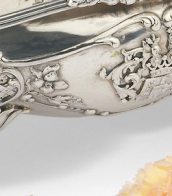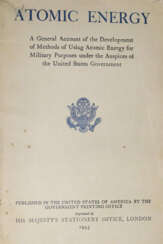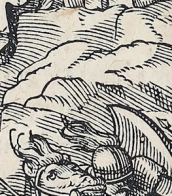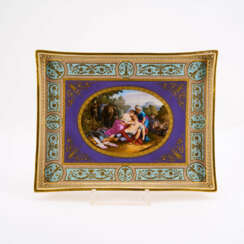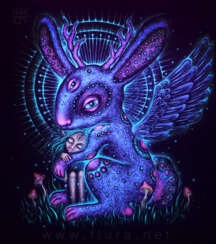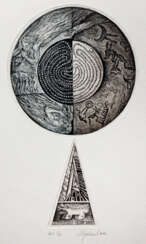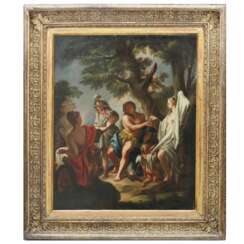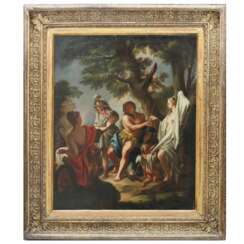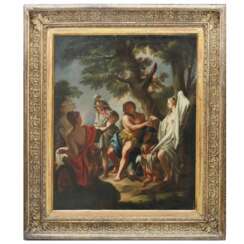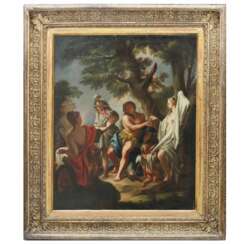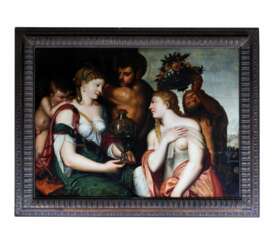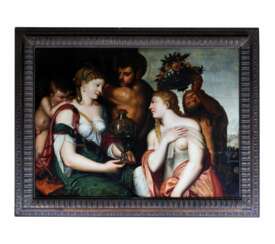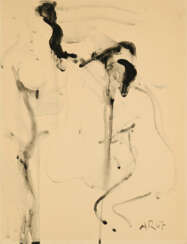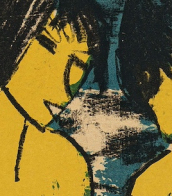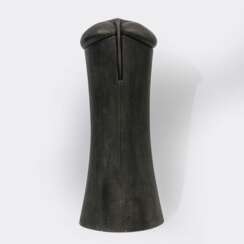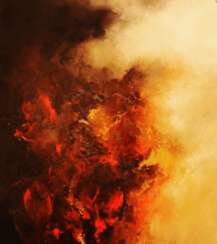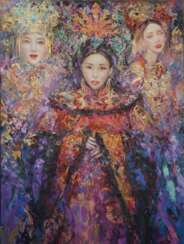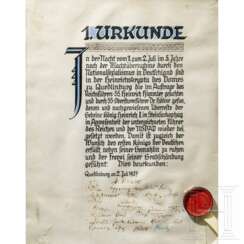2813 Items by auctions and galleries:
myth
Creations
Alexander Shinkarenko (b. 1977)  Shop Shinkarenko Alexander
Shop Shinkarenko Alexander

Alexander Shinkarenko
21.06.1977
Ukraine
Архитектор и Художник.
Работаю в разных стилях, но предпочитаю Реализм.
В сюжет каждой картины вкладываю философию и свое мироощущение.

Artist shop
Shinkarenko Alexander
Ukraine
Number of products: 6
"Архитектура"
Valentin Chugaev (b. 1946) 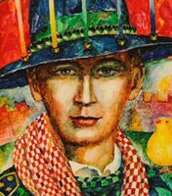 Shop Chugaev Valentin
Shop Chugaev Valentin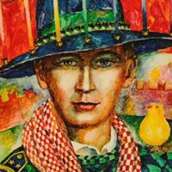

Valentin Chugaev
02.08.1946
Russia
Валентин Николаевич Чугаев, родился 2 августа 1946 года в
г. Курильске, на острове Итуруп. Детство провел на Украине, в
Белоруссии и в Литве. Ко второму классу школы приехал в Пермь,
в составе семьи отца, Чугаева Николая Андреевича, учителя,
затем пограничника, участника ВОВ 1941-1945 г.г., и матери
Чугаевой (Чаговец) Натальи Терентьевны, украинки из
Харьковской области.
Рисованием занимался с детства. Будучи студентом юрфака, посещал
студии живописи при дворцах культуры им. В.И. Ленина и
им. Я. М. Свердлова (ныне им. А. Г. Солдатова). Заочно учился в народном
университете на факультете живописи в Москве в 1965-1966 гг.
Профессионально живописью занимается с 1997 года, член творческого
союза художников России в Москве. Участвовал в 42 выставках, в т. ч. в
1997 г. в США, имеет 24 персональные выставки в Перми, Екатеринбурге
и Москве. Публиковался в 15 разных изданиях и каталогах, в том числе
в альбоме живописи Пермских художников (2004 г,), Альбоме живописи
российских художников из собрания картин галереи СДМ банка
(2006 г., Москва). Поэт (публиковался в журнале «Простор» Союза
писателей Казахстана в 1981 году)

Artist shop
Chugaev Valentin
Russia
Number of products: 5
VOLPENTINGER
Serhii Rushavytsin (b. 1975)  Shop Rushavytsin Serhii
Shop Rushavytsin Serhii

Serhii Rushavytsin
15.10.1975
Ukraine
в 2000 году я со свой супругой создали Арт проект "FluRanet". Сейчас это украинская сеть магазинов, представляющих психоделические товары и произведения искусства, это первый проект подобного рода, первая PSY -галерея в Украине.
Fluranet производит и продает картины и полотна, дизайнерскую одежду, аксессуары, воплощающие уникальную авторскую интерпретацию психоделической транс-культуры. Помимо этого, Fluranet Lab работают как дизайнеры и декораторы фестивальных площадок, клубных мероприятий и тематических ивентов, обеспечивая их концепцию и визуальные решения, создавая масштабные инсталляции, арт-объекты, пространственную архитектуру и роспись. Проект тесно сотрудничает с большим количеством европейских музыкальных фестивалей, такие как Boom Festival (Португалия), Ozora (Венгрия), Sonica (Италия), Vibronica Kaleidoscope (Украина),Каледоскопье ( Украина) Antaris (Германия), Sun Festival (Венгрия), Psy-Fi (Нидерланды).
Главное достижение Fluranet — в том, что в то время, как проект развивался, совмещая коммерческую успешность и полную артистическую свободу, он сумел остаться верным своим ключевым идеям и миссии. Которую можно сформулировать так: во что бы то ни стало оставаться на связи со внутренним космосом, держать портал в реальность снов и мечтаний всегда открытым. Наполнять каждый день творчеством — как рыбак, каждый рассвет выходящий на берег океана с сетями, мы выходим в наше внутренне психоделическое пространство, чтобы вытащить из него невероятные образы и орнаменты, фантасмагорических существ, принадлежащих другой, флюоресцентно яркой реальности. Чтобы раскрасить этот мир.

Artist shop
Rushavytsin Serhii
Ukraine
Number of products: 26
Dorey
Leonid Stroganov (b. 1979) 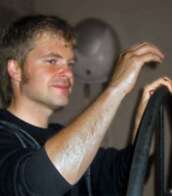 Shop Stroganov Leonid
Shop Stroganov Leonid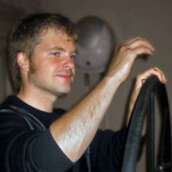

Leonid Stroganov
24.11.1979
Russia
Я родился в 1979 году в Ленинграде.В 1999 году закончил СПбХУ им Рериха,факультет живописи,а в 2002 году Институт Декоративно-Прикладного Искусства,факультет графики.Член Союза Художников России с 2002 года.В 2006 году прошел стажировку в Институте Тамаринд(США)Провел около 15 персональных выставок в музеях,выставочных залах и галереях России,Дании,Финляндии и Швейцарии.В жанре "Книга художника"создал книги " Царь Эдип" Софокла и "Эротические сонеты" Абрама Эфроса.Для идательства "Вита -Нова" выполнил иллюстрации к "Сонетам" Франческо Петрарки и Книге Пророка Исаии.
являюсь автором приблизительно 100 книжных знаков.Принимал участие в конгрессах международной федерации экслибриса(FISAE).Неоднократно становился лауреатом всероссийских имеждународных конкурсов в этой области.
Мои работы находятся в собраниях:Библиотеки Государственного Эрмитажа и его филиала-Выставочного центра "Эрмитаж-Выборг",Государственной публичной библиотеки им.М.Е.Салтыкова-щедрина,Всероссийского музея А.С.Пушкина,Литературно-мемориального музея-квартиры Ф.М.Достоевского,Сахалинского областного художественного музея,Государственного музея изобразительных искусств республики Татарстан,Ямало-Ненецкого окружного музейно-выставочного комплекса им И.С. Шемановского(Салехард),картинной галереи Вологодской области,музеев изобразительных искусств Старого Оскола,Орла,Екатеринбурга,Музея замка Мальборк (Польша),музея графики малых форм(Сент-Никлаас,Бельгия)Института Тамаринд (США),Музея печати в Шеньчжене(Китай),Музея искусств Фредериксхавна(Дания) и частных собраниях.

Artist shop
Stroganov Leonid
Russia
Number of products: 61
Lot 90 Anton Räderscheidt. Neptun/Poseidon (From: Mythologie)
Anton Räderscheidt (1892 - 1970) 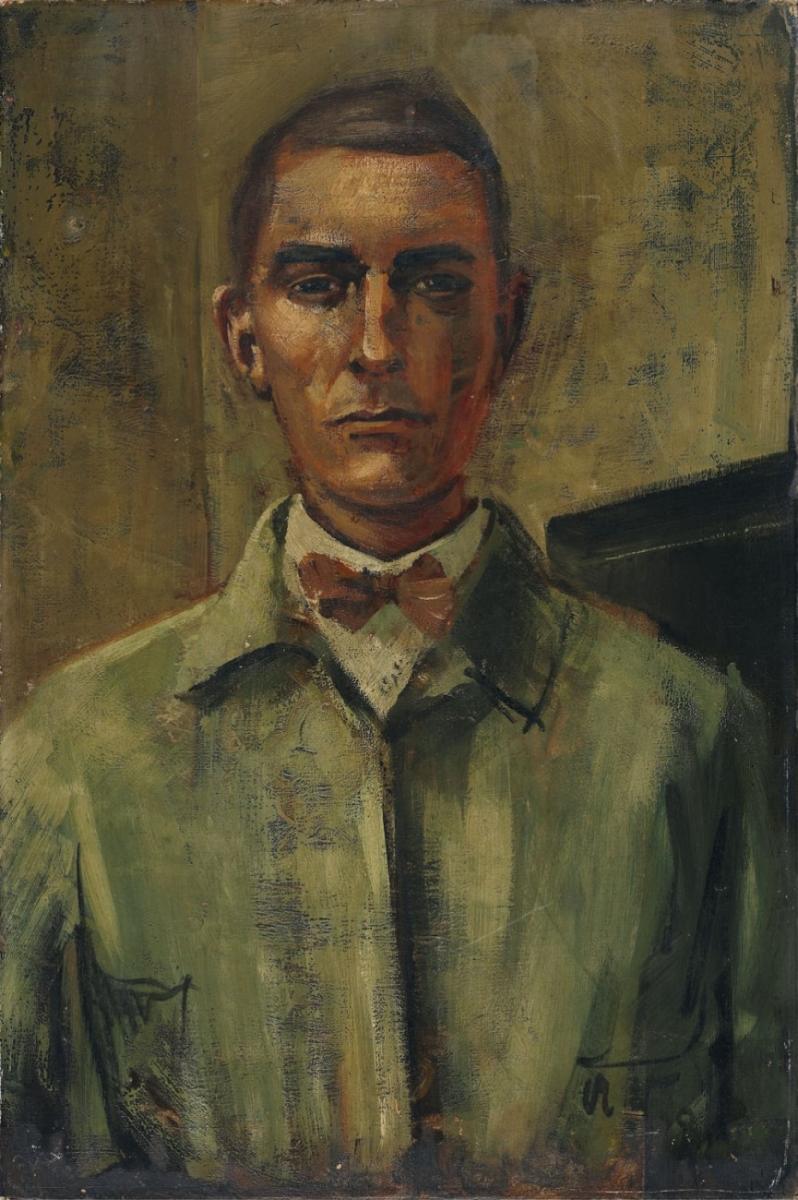 A1277: Modern Art
A1277: Modern Art 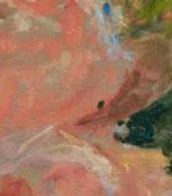

Anton Räderscheidt
11.10.1892 - 08.03.1970
Germany
Anton Räderscheidt was a German painter who was a leading figure of the New Objectivity. Räderscheidt was born in Cologne. His father was a schoolmaster who also wrote poetry. From 1910 to 1914, Räderscheidt studied at the Academy of Düsseldorf. He was severely wounded in the First World War, during which he fought at Verdun. After the war he returned to Cologne, where in 1919 he cofounded the artists' group Stupid with other members of the local constructivist and Dada scene. The group was short-lived, as Räderscheidt was by 1920 abandoning constructivism for a magic realist style. In 1925 he participated in the Neue Sachlichkeit ("New Objectivity") exhibition at the Mannheim Kunsthalle.

VAN HAM Kunstauktionen GmbH
A1277: Modern Art
Date: 06.11.2025 18:00 UTC +01:00
Number of lots in the catalog: 130
Princess-Swan
Nataliia Bahatska (b. 1967) 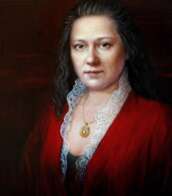 Shop Bahatska Nataliia
Shop Bahatska Nataliia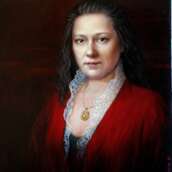

Nataliia Bahatska
20.10.1967
Ukraine
I was born in 1967.
Graduated childrens art school.
Graduated from Kyiv National University of Design, designer in 1993.
Academy of Psychosocial Technologies in 2008
The artworks are in Ukraine, Lithuania, Kazakhstan, Russia, Germany, Sweden, Switzerland, Italy, France, UK, USA, Vietnam, Canada, Netherlands.
Recently, all paintings have been created in hyperrealism and pop art.
Exhibition "Pro Cheese", ArtHall "D12", Kiev, 2021.
IV Ukrainian Festival of Contemporary Women's Art at the Institute of Contemporary Art of the National Academy of Arts of Ukraine, Kyiv, Ukraine, 2021
International exhibition "# 365daysafter" in the gallery "Artist", Kyiv, 2021. Exhibition "HRYVNA ART" in the Palace of Arts, Lviv, 2021.
Exhibition "HRYVNA ART" in the Museum of History of Kyiv, Kyiv, 2021.
Exhibition "HRYVNA ART" in the Ministry of Finance of Ukraine, Kyiv, 2021.
Exhibition at the Sky Mall, Kiev. 2021
Competition Pro Cheese Awards, Kiev, Parkovy Exhibition and Convention Center. Grand Prix. 2021
Exhibition "Барви світу" in Parlament of Ukraine. Kyiv. Ukraine, 2019
Sheldon Rose Gallery, "Big Ideas in Small Art", Toronto, Canada, 2019
Group exhibition from Ukraine at 58 Venice Biennale, "Falling shadow Dreams over gardens Giardini ". Italy, 2019
Exhibition "Vizionario" in la galleria Merlino Bottega d'arte di Firenze. Italy, 2019
Exhibition in ABC-art gallery. Kyiv, 2019
1st All-Ukrainian Triennale "NU-ART", Kremenchuk, 2018
"Ukraine from Trypillya to the present in the images of contemporary artists" - Biennial. National Union of Artists of Ukraine (NUAU), Kyiv, 2018
"Picturesque Ukraine", NUAU,the city of Severodonetsk, 2017.
Biennale of abstract Painting,NUAU, Kyiv, 2017
Until the Day of the Artist, NUAU, Kyiv, 2016, 2017, 2018.
"Portrait Painting" , gallery "Mytets", Kyiv, 2017
"To the 160th anniversary of Ivan Franko",NUAU, Ivano-Frankivsk city, 2016
On Independence Day of Ukraine, NUAU, Kyiv, 2017, 2018,
When buying, please specify the payment and delivery methods.

Artist shop
Bahatska Nataliia
Ukraine
Number of products: 231
Shadow of dreams
Nataliia Bahatska (b. 1967)  Shop Bahatska Nataliia
Shop Bahatska Nataliia

Nataliia Bahatska
20.10.1967
Ukraine
I was born in 1967.
Graduated childrens art school.
Graduated from Kyiv National University of Design, designer in 1993.
Academy of Psychosocial Technologies in 2008
The artworks are in Ukraine, Lithuania, Kazakhstan, Russia, Germany, Sweden, Switzerland, Italy, France, UK, USA, Vietnam, Canada, Netherlands.
Recently, all paintings have been created in hyperrealism and pop art.
Exhibition "Pro Cheese", ArtHall "D12", Kiev, 2021.
IV Ukrainian Festival of Contemporary Women's Art at the Institute of Contemporary Art of the National Academy of Arts of Ukraine, Kyiv, Ukraine, 2021
International exhibition "# 365daysafter" in the gallery "Artist", Kyiv, 2021. Exhibition "HRYVNA ART" in the Palace of Arts, Lviv, 2021.
Exhibition "HRYVNA ART" in the Museum of History of Kyiv, Kyiv, 2021.
Exhibition "HRYVNA ART" in the Ministry of Finance of Ukraine, Kyiv, 2021.
Exhibition at the Sky Mall, Kiev. 2021
Competition Pro Cheese Awards, Kiev, Parkovy Exhibition and Convention Center. Grand Prix. 2021
Exhibition "Барви світу" in Parlament of Ukraine. Kyiv. Ukraine, 2019
Sheldon Rose Gallery, "Big Ideas in Small Art", Toronto, Canada, 2019
Group exhibition from Ukraine at 58 Venice Biennale, "Falling shadow Dreams over gardens Giardini ". Italy, 2019
Exhibition "Vizionario" in la galleria Merlino Bottega d'arte di Firenze. Italy, 2019
Exhibition in ABC-art gallery. Kyiv, 2019
1st All-Ukrainian Triennale "NU-ART", Kremenchuk, 2018
"Ukraine from Trypillya to the present in the images of contemporary artists" - Biennial. National Union of Artists of Ukraine (NUAU), Kyiv, 2018
"Picturesque Ukraine", NUAU,the city of Severodonetsk, 2017.
Biennale of abstract Painting,NUAU, Kyiv, 2017
Until the Day of the Artist, NUAU, Kyiv, 2016, 2017, 2018.
"Portrait Painting" , gallery "Mytets", Kyiv, 2017
"To the 160th anniversary of Ivan Franko",NUAU, Ivano-Frankivsk city, 2016
On Independence Day of Ukraine, NUAU, Kyiv, 2017, 2018,
When buying, please specify the payment and delivery methods.

Artist shop
Bahatska Nataliia
Ukraine
Number of products: 231
Nereid
Nina Ingilevich (b. 1993)  Shop Ingilevich Nina
Shop Ingilevich Nina

Nina Ingilevich
12.07.1993
Russia
My name is Nina, I am from Sain-Petersburg. I prefer watercolor and sometimes practice oil painting. I like to use warm shades and sensual storylines in my works that awaken different feelings and emotions
Меня зовут Нина, я из Санкт-Петербурга. Я предпочитаю акварель и иногда занимаюсь масляной живописью. Мне нравится использовать в своих работах теплые оттенки и чувственные сюжетные линии, которые пробуждают разные чувства и эмоции

Artist shop
Ingilevich Nina
Russia
Number of products: 4
Chinese fantasy
Anna Privaloff (b. 1976)  Shop Privaloff Anna
Shop Privaloff Anna

Anna Privaloff
29.03.1976
Cyprus
Anna Privaloff was born in Soviet Union 1976.She started to paint from four years old.Anna studied in art studio,art school,high art school in Ivanovo,completed her studies in university of Herzen in Russia.She is inspired by works of Gustav Klimt,Vinsent Van Gogh,Paul Gauguin ,Tuluz-lotrek and Michael Vrubel.Anna blends styles,colours,and saturates her art with eroticism and ethnic motives.She ties elements of Greek mythology,ancient legends,poetry and literature into her paintings.Through Anna's paintings one enters an enchanting fairytale where reality and illusion meet.Anna participated in exhibitions in the House of Arts in Saint Petersburg,Moscow and in the Art Museum of Ivanovo.Currently Anna lives and work in Cyprus,where she also participated in collective and private exhibitions.Many of her paintings remain in private collections in USA,Russia,Australia,Israel,Austria,England,Germany,Grease and Cyprus.Anna's portraits remain in private collection of Trump family,Robert Rothschild,Robert C. Rockefeller ,Nicos Anastasiades(President of Cyprus)

Artist shop
Privaloff Anna
Cyprus
Number of products: 20
Lot 4075 Heinrich Himmler - Urkunde über die Beisetzung der Überreste König Heinrichs I. (876 - 936) im Dom zu Quedlinburg mit 28 Unterschriften von SS- sowie Parteiführern vom 2. Juli 1937
A106r: Orden und Militaria ab 1919 

Hermann Historica
A106r: Orden und Militaria ab 1919
Date: 07.11.2025 10:00 UTC +01:00
Number of lots in the catalog: 868


